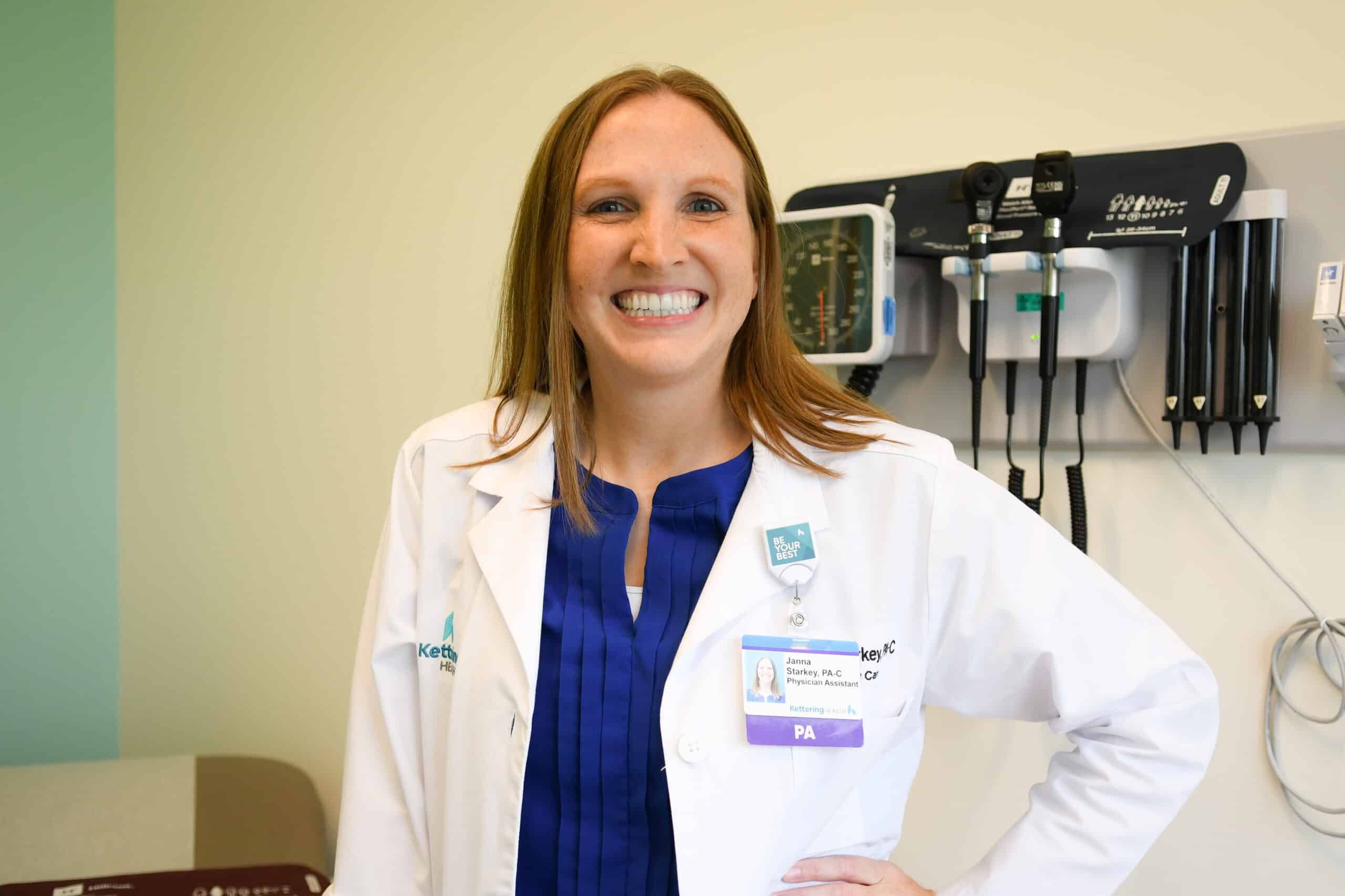Primary Care
Want to learn more about this at Kettering Health?
At a Glance
Q: How can you lower high cholesterol?
A: Eat heart-healthy foods, exercise regularly, and maintain a healthy weight; medication may help if lifestyle changes aren’t enough.
- HDL is ‘good’ cholesterol; LDL is ‘bad’ cholesterol.
- Choose omega-3-rich foods like nuts and olive oil.
- Learn how food and exercise affect cholesterol levels.
From cereal boxes to produce stickers, numerous products promise to help lower your cholesterol.
It sounds great, but what is it we’re lowering?
“Cholesterol is a kind of lipid—a waxy substance found in your blood—that is important to your health,” explains Janna Starkey, a physician assistant. Cholesterol is responsible for helping with vital processes like building cell membranes, creating hormones, and producing vitamin D. “However,” Janna says, “too much cholesterol can increase your risk of heart attack and stroke.”
What is the difference between “good” and “bad” cholesterol?
Your liver and intestines produce about 80% of the cholesterol your body needs, and the additional 20% is acquired from food you eat. “Cholesterol is found in fatty foods such as red meat, cheese, butter, baked goods, and fried foods,” says Janna.
“HDL (short for high-density lipoprotein) is commonly referred to as ‘good’ cholesterol because it travels to the liver for removal from the body,” explains Janna. “LDL (short for low-density lipoprotein) is commonly referred to as ‘bad’ cholesterol because it travels to the arteries and can lead to a build-up of plaque.”
An easy way to remember good versus bad cholesterol is that good has four letters and so does high (HDL), and bad has three letters and so does low (LDL).
What is a normal range?
A person’s total cholesterol is their HDL plus LDL.
To determine your cholesterol, your primary care provider can order lab work, and you’ll have blood drawn. “The average adult should get their cholesterol checked annually,” Janna says. “But you might need to have it checked every three to six months if your levels are abnormal.”
As a guideline, your HDL should be higher than 40 mg/dl, and your LDL lower than 130 mg/dl. Total cholesterol should be less than 200 mg/dl.
Normal cholesterol ranges are
- HDL: greater than 40 mg/dL
- LDL: less than 130 mg/dL
- Total cholesterol: less than 200 mg/dL
Treatment options
If your total cholesterol is high, modifying your lifestyle and habits can help lower it.
“To help lower your total cholesterol, you can make changes to your diet, including decreasing foods high in total fats and saturated fats and opting for foods high in omega-3 fatty acids,” says Janna.
She recommends cooking with canola or olive oil and eating foods like walnuts, almonds, pistachios, fruits, vegetables, beans, oats, whole grains, and fiber-rich foods.
Increasing physical activity and losing weight can also help lower cholesterol levels.
“If your cholesterol numbers do not normalize after six to 12 months of lifestyle changes, your provider might discuss beginning prescription medication,” says Janna. “I compare taking cholesterol-lowering medicine to investing in your retirement plan. The health pay-off years down the road in terms of cardiovascular disease risk reduction will be worth it.”











